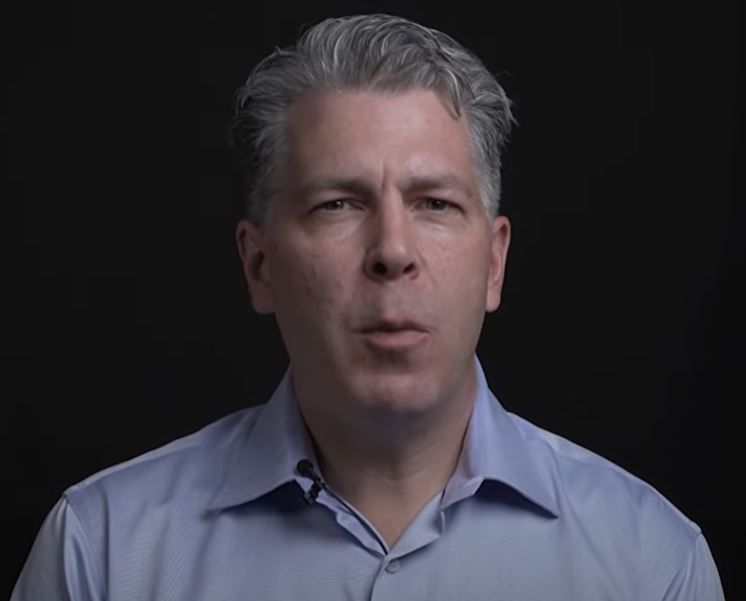Prescription Opioids Rehab in Orange County, CA: Essential Steps to Recovery
Your recovery starts here. Call us today.
The opioid overdose epidemic has been a significant public health issue, affecting millions of individuals and families. Orange County Drug and Alcohol Rehab Center offers a vital lifeline for those struggling with opioid abuse. Prescription opioids, initially intended for pain relief, have played a large part in this crisis. Understanding the difference between physical dependence and opioid addiction is crucial in tackling misuse. Physical dependence occurs when the body adapts to the drug, leading to withdrawal symptoms when it's not used, while addiction encompasses behavioral changes like the inability to stop using despite negative consequences.
In 2023, the opioid overdose crisis in the U.S. reached unprecedented levels, with fatal overdoses peaking above 112,000 deaths, marking the first time in U.S. history that such a high number of deaths was recorded in a 12-month period (NPR, 2023). The path to recovery from opioid use disorder often requires professional intervention and support. Treatment options typically include a combination of medications and behavioral therapies, as highlighted by the National Institute on Drug Abuse. Medications used in treatment are safe and designed to interact with the same brain receptors as opioids, helping reduce dependency and save lives.
The U.S. Drug Enforcement Administration (DEA) seized more than 360 million deadly doses of fentanyl in 2023, highlighting the scale of the crisis (NPR, 2023). Rehabilitation facilities offer vital support for those struggling with prescription opioid addiction. Personalized care that addresses individual needs makes a difference in successful recovery. Drug overdoses have become a leading cause of death among young Americans aged 18-45 and have also significantly impacted pregnant women (NPR, 2023). It's important to recognize the signs of opioid misuse and seek help promptly. With the right support and treatment, individuals can overcome addiction and lead fulfilling lives free from the grip of prescription opioids.
How Kirk Foat Got Off Prescription Opioids
Kirk shares how he got his life back from prescription opioids

Kirk Foat's journey with prescription opioids began in 2008 after a severe injury to his right hand while on vacation. He underwent four surgeries in London, Ontario, which successfully saved his hand, but to cope with the intense pain, he was prescribed opioid medications. Over the course of eight and a half years, Kirk was prescribed over 600 opioid prescriptions. During this time, he experienced significant mental fog, emotional numbness, disrupted sleep, and an overall diminished sense of self. He was also concerned about his young children accidentally finding a stray pill, despite keeping his medication in a locked safe.
How He Achieved Freedom from Opioids
Kirk Boat's path to overcoming opioid addiction involved a disciplined seven-month tapering process, guided by insights from his psychologist. One of the critical turning points was learning to distinguish between physical pain and his mental response to it. Prior to this, Kirk had been caught in a cycle of medicating for pain that seemed to worsen with each dose. After adopting a new mindset, he was able to acknowledge the pain without immediately resorting to opioids.
The tapering itself was grueling, with Kirk reducing his dosage by 10 milligrams every three weeks. He planned for intense sickness over long weekends, experiencing severe withdrawal symptoms like nausea, diarrhea, and restless leg syndrome. Even after tapering to zero, the emotional and physical effects of withdrawal persisted, and it took nine months before he felt truly normal again. Despite the difficulty, Kirk persevered, understanding the long-term benefits of living opioid-free.
How Kirk Is Doing Today
Today, Kirk Foat has successfully freed himself from opioid dependency and is eager to share his story with others. While he emphasizes that he is not a scientist or doctor, he takes pride in the fact that he made it to zero. His journey serves as a testament to the struggles and triumphs of overcoming opioid addiction, and he finds satisfaction in helping others by sharing what worked for him. Kirk's recovery was long and grueling, but he has regained control of his life and hopes his experience can inspire and guide others facing similar challenges.
Looking for Assistance in Accessing Treatment?
Worried about treatment costs or limited insurance coverage? We accept various insurance providers to ensure you get the care you need, regardless of your financial situation.
Contact us today to learn how we can help.
A Deeper Dive:
What are Prescription Opioids?
Prescription opioids are powerful medications derived from the opium poppy plant or synthesized in labs. They are primarily used to manage moderate to severe pain. Besides their pain relief capabilities, opioids can also lead to euphoria, making them prone to misuse and dependence.
Types and Effects of Prescription Opioids
Common prescription opioids include hydrocodone, oxycodone, codeine, and morphine. These drugs act on opioid receptors in the brain, reducing the perception of pain and can induce feelings of pleasure. Fentanyl, a synthetic opioid, is extremely potent and often used for treating severe pain, particularly in cancer patients.
Repeated use can lead to tolerance, requiring higher doses to achieve the same effects. This increases the risk of dependence and addiction. Opioids can cause side effects like drowsiness, constipation, and nausea. Chronic use may lead to serious risks like respiratory depression or overdose. Each opioid has unique properties, such as methadone and buprenorphine, used in treatment, helping individuals manage dependence by minimizing withdrawal symptoms.
Recognizing Opioid Use Disorder
Opioid Use Disorder (OUD) manifests through a pattern of misuse that interferes with daily life. Individuals might exhibit uncontrollable cravings, inability to reduce usage, or persistent use despite knowing the harm. Risk factors for developing OUD include a history of substance abuse, chronic pain, or mental health disorders.
Treatment for OUD often involves medications like methadone, buprenorphine, and naltrexone. These help reduce cravings and withdrawal symptoms. Behavioral therapies complement medical treatment, providing strategies to cope with addiction. Early recognition and intervention are crucial in preventing the severe consequences of misuse, including overdose and death. Identifying OUD can create opportunities for recovery and improved quality of life.
Treatment Options for Opioid Addiction
Medication-assisted treatment, behavioral therapies, and personalized recovery plans are essential components of treating opioid addiction. These approaches work together to address the physical, mental, and emotional aspects of the disorder.
Medication-Assisted Treatment (MAT)
Medication-Assisted Treatment utilizes medications like methadone, buprenorphine, and naltrexone to help manage withdrawal symptoms and reduce cravings. Methadone and buprenorphine are often used in opioid treatment programs to stabilize patients. Naltrexone blocks the euphoric effects of opioids, helping to prevent relapse.
These medications are part of evidence-based treatment plans recognized for enhancing recovery efforts. It's crucial for individuals with a prescription opioid use disorder to access MAT through a certified opioid addiction treatment center, ensuring they receive proper medical direction.
Behavioral Therapies and Counseling
Behavioral Therapies play a significant role in addiction treatment. Cognitive-behavioral therapy is commonly used to help individuals understand and change their drug-related behaviors. This therapy supports people in recognizing triggers and developing coping strategies.
Counseling sessions provide a safe space for individuals to discuss their thoughts and emotions. These interventions support patients in addressing the root causes of their substance use disorder. Embedding counseling in treatment programs leads to more effective treatment outcomes, integrating both emotional support and practical strategies.
Customizing Care: Personal Recovery Plans
Personal Recovery Plans are tailored strategies that consider an individual's unique needs and circumstances. These plans often include goals concerning medication compliance, attendance at support groups, and participation in therapy sessions.
Creating a comprehensive recovery plan involves collaboration between the patient and healthcare providers, aiming to build a structured yet flexible roadmap to recovery. Effective treatment plans adjust over time as patients progress through their recovery journey, ensuring continuous adaptation and support. Personalization of care is imperative to foster long-term recovery and reduce the risk of relapse.
FAQs
How does one recognize the signs of prescription opioid addiction?
Recognizing the signs of opioid addiction includes noticing changes in behavior, such as increased secrecy or mood swings. Physical symptoms might involve drowsiness, weight loss, or poor coordination. Identifying these signals early can lead to timely intervention and support.
What are the latest treatment options for opioid addiction?
Treatment options for opioid addiction include a combination of medication and therapy. These treatments are designed to help individuals manage cravings, reduce withdrawal symptoms, and support long-term recovery. Effective treatment plans are tailored to each individual’s specific needs.
What medications are commonly used in the treatment of opioid addiction?
Medications such as methadone, buprenorphine, and naltrexone are commonly used. These help manage withdrawal symptoms and cravings. Methadone and buprenorphine work by activating opioid receptors, whereas naltrexone blocks these receptors, preventing the effects of opioids.
What emergency treatments are available for opioid overdose?
Naloxone is a key emergency treatment for opioid overdose. It rapidly reverses the effects of opioids, helping to restore normal breathing in individuals who have overdosed. It is crucial for naloxone to be administered quickly and followed by emergency medical help.
What are the steps to take for starting opioid addiction rehabilitation?
Starting opioid addiction rehabilitation involves several steps. First, it is essential to seek professional assessment to tailor a treatment plan. This may include detoxification, medication, counseling, and support groups. Consistent follow-up care is critical for maintaining sobriety.
How does behavioral therapy complement medication in opioid addiction treatment?
Behavioral therapy works alongside medication to address the psychological aspects of addiction. It can help individuals develop coping strategies, change harmful behavior patterns, and enhance motivation for recovery. This combination increases the effectiveness of the overall treatment plan.

